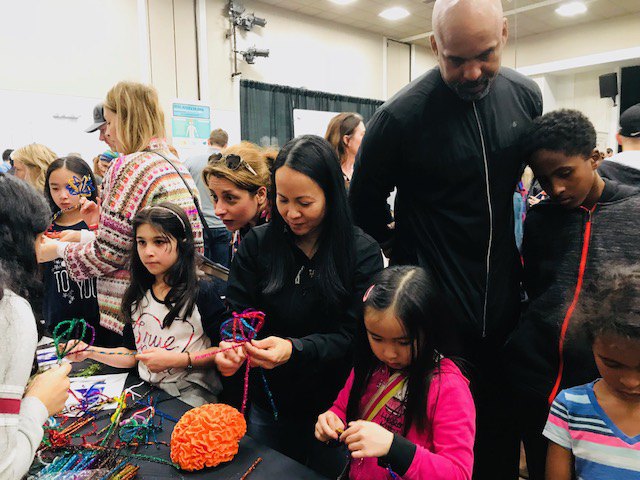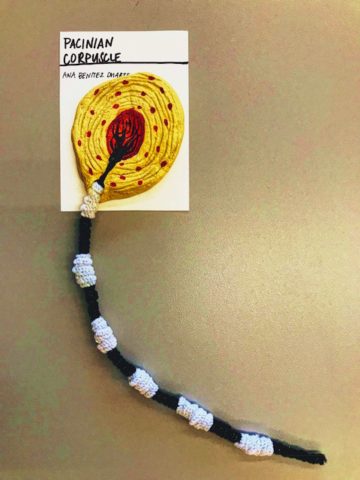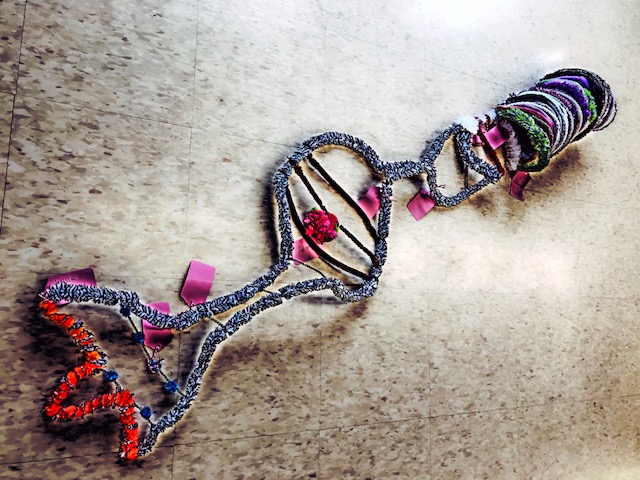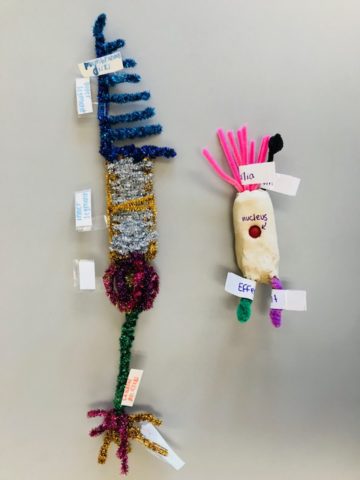Post written by Portland State University undergraduate Lyubov Bachinskaya
Spending time with others involved in NW Noggin was a great experience for me and helped validate the direction I want to go in my life. This is such an exciting option for undergraduates to explore and get involved in even after college. Teaching children about the brain and sharing some of the experiences that contributed to my own learning about brains and brain cells was a great way for me to step out of my comfort zone…

I love the way NW Noggin incorporates art and art making into outreach. It a great idea. For one thing, I’ve always been a big fan of art and all the great things that come with it, including creative exploration, valuing my own decisions and choices, and perceiving the world in new and innovative ways. Being able to teach kids about the brain with pipe cleaners is not only a great experience for me but for the children we met as well.

Volunteering at the OHSU OMSI brain fair was really fun! My sister brought her kids to come check it out and they absolutely loved it. I was at the Noggin booth teaching children and parents how to make neurons out of pipe cleaners. Kids were so fascinated by these neurons, and many worked hard to make sure they perfected their cells, which was neat to see.


LEARN MORE: Putting the brains in Brain Fair!
LEARN MORE: STEAM Art Projects
The question that I got asked a lot was “what are you girls making over here?”

There were a few adults who recognized what we were crafting from our pipe cleaners, but most people were not sure at all. I would explain to both children and parents that we were making neurons from pipe cleaners that resemble the neurons that are in our nervous systems, including our brains. Kids would be so intrigued by that response alone, they would follow up with, “Wait – what’s a neuron?!”

I explained that our neurons allow us to be able to do things because they communicate and relay information from the outside world along extensive branching networks in our brains. As we twisted more pipe cleaners to make more cells, there were questions about the different parts like the axon, soma and dendrites. I told them what each part was and how it could be shorter, longer, larger, smaller or more numerous, and what that might mean for what a neuron can do. We also talked about more specialized sensory cells, including the hair cells in your ear with cilia swaying back and forth to different frequencies of sound, and the photoreceptors in your eyes that absorb the electromagnetic energy of visible light.

I did get asked a lot about how many neurons there are in the human brain. I had taken several classes with Dr. Griesar, and I remember making my own neurons out of pipe cleaners. I remember I had so much fun doing it, that I put a lot of thought and effort into making sure I was happy with the way it turned out. And I was!

LEARN MORE: The Human Brain in Numbers: A Linearly Scaled-up Primate Brain
I had such a great time making neurons at OMSI for all the children to see, and I think it reflected in my work. I believe the children saw it too. It was a great way for me to get the kids drawn into what I was busy doing so that they could get excited about neurons as well. The kids did such a great job and they were so proud of their work, it was a very fulfilling thing to see. Even the parents were intrigued and made their own neurons. Again, I have always been a big supporter of art and teaching children through art, so this experience was dear to my heart. Being a lover of both art and the brain was something shared by my fellow volunteers, and putting the two together was extremely fun and satisfying for me, and also a memorable learning experience.

I want to volunteer more, explore more, discover more, and teach more. We are all such unique human beings and the way we learn isn’t always served best by how we’re taught in schools. Being able to visually experience all that was going on at the Brain Fair and how much fun the kids were having while gaining great knowledge was a truly fascinating experience that I will long cherish.


